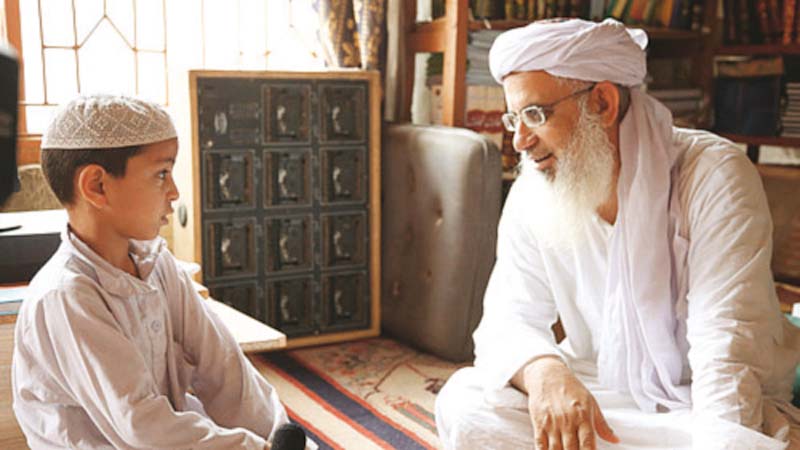
Inspired by Nobel laureate VS Naipul’s eponymous book, the film follows five characters against a backdrop of key events in Pakistan, starting from the Lal Masjid siege ordered by Pervez Musharraf in 2007 to the recent Peshawar attack that claimed over 150 lives, most of them school children. The majority of the film’s running time is understandably devoted to the controversial cleric and leader of Lal Masjid, Maulana Abdul Aziz, since the film-makers have not only managed to get unprecedented access to the man himself but also the mosque and seminary he operates from. Taking a vocal stand against Aziz is Dr Pervez Hoodbhoy, an academic determined to provide a moderate alternative discourse that can counter Aziz’s vitriol-laced teachings. There are also heartbreaking stories of Zarina, a young girl hungry for education who has recently escaped from the madrassah at Lal Masjid, Talha, a young boy whose family enrolls him under Aziz’s tutelage due to financial hardships and Tariq, a village chief who uses his personal land to set up a local school.

While the film deals with terrorism, an easily sellable concept in the foreign market, it doesn’t resort to the usual tactics of pandering to a certain audience and reducing the issue to one of bombs, bearded mullahs and the ‘poor’ Pakistanis who suffer as a result. Instead, it goes a step further and addresses the failure of the State in providing basic necessities such as food, economic security and education to its population, creating a vacuum for people like Aziz to build their case on.
The biggest success of the film, in my opinion, is giving a voice to average Pakistanis like Tariq, who are fighting extremist mindsets on a daily basis but never get the recognition they deserve. A scene where Tariq is pleading to one of the village parents to not compromise their children’s life by putting them in the care of seminaries where they may be brainwashed and the resistance he faces in return is particularly moving. It shows how the various protagonists, belonging to different income and social classes, are fighting the war against terrorism in their own way. The absence of a voice-over and allowing the characters to speak for themselves also lends an organic and natural flow to each character’s story, with the exception of Hoodbhoy, whose story felt abrupt, fragmented and incomplete.
Overall, Among the Believers might not offer anything new or groundbreaking but definitely puts things in perspective. It drives home the fact that regardless of the number of troops we deploy on our borders, the real battle against terror has to be fought in our classrooms. And most importantly, it displays an honest, heartfelt effort to understand a country whose people have perhaps paid the biggest price for the war on terror but seldom get credit for it.

Published in The Express Tribune, Sunday Magazine, May 3rd, 2015.












































COMMENTS
Comments are moderated and generally will be posted if they are on-topic and not abusive.
For more information, please see our Comments FAQ